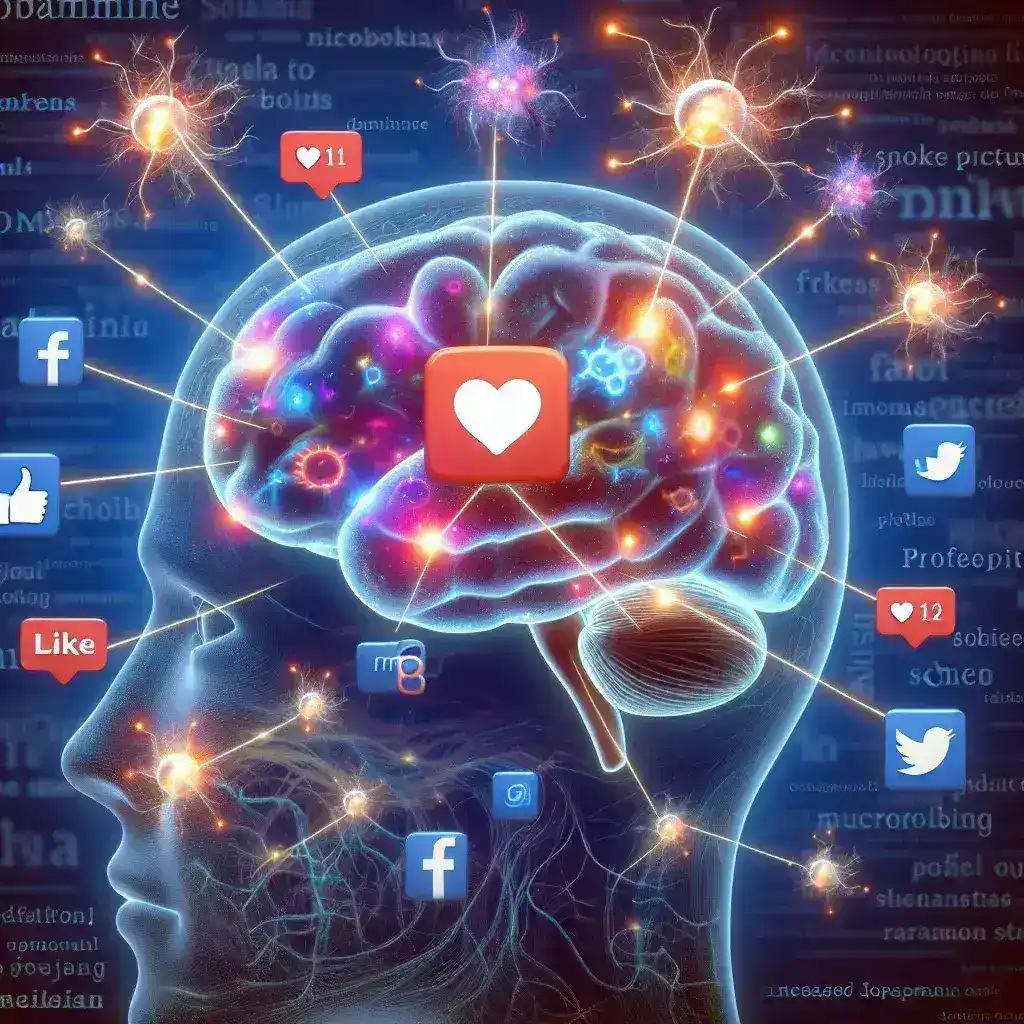Over the past decade, social media has become an integral part of daily life for billions of people around the world. Platforms like Facebook, Instagram, Twitter, and TikTok have transformed the way we communicate, share experiences, and consume information. However, beneath the surface of these seemingly harmless apps lies a complex interplay with our brain chemistry, particularly with a neurotransmitter called dopamine. This article delves into how social media affects your dopamine levels and what that means for your mental health and overall well-being.
Understanding Dopamine
Dopamine is a neurotransmitter that plays a crucial role in the brain’s reward system. It is often referred to as the “feel-good” chemical because it is released in response to pleasurable activities such as eating, exercising, or achieving a goal. Dopamine not only makes us feel good but also motivates us to repeat those actions, reinforcing behaviors that are beneficial for our survival and happiness.
The Social Media Connection
Social media platforms are designed to be highly engaging and rewarding. They use various psychological techniques to keep users hooked, including notifications, likes, comments, and shares. These features trigger the release of dopamine, creating a cycle of pleasure and anticipation that can be hard to break.
Notifications and Instant Gratification
One of the most powerful tools social media uses to influence dopamine levels is the notification system. Every time you receive a notification, whether it’s a like, comment, or message, your brain releases a small amount of dopamine. This immediate reward creates a sense of accomplishment and validation, making you more likely to continue using the platform.
Likes and Social Proof
Likes serve as a form of social proof, indicating that others find your posts valuable or interesting. When you see a high number of likes on a post, your brain perceives it as a positive reinforcement, leading to a surge in dopamine. This can create a strong desire to seek more likes, driving you to post more frequently and engage more deeply with the platform.
Comments and Social Interaction
Comments provide a more personal form of interaction, allowing you to connect with others and receive feedback on your posts. Engaging in conversations through comments can also trigger dopamine release, as your brain rewards you for forming social bonds and receiving attention. This can lead to prolonged periods of social media use, as you seek out more meaningful interactions.
Shares and Viral Content
When your content is shared widely, it can result in a significant dopamine boost. The feeling of being recognized and celebrated by a larger audience can be incredibly rewarding, motivating you to create and share more content. This can turn into a competitive environment where users strive to produce viral content, often at the expense of their own well-being.
The Dark Side of Dopamine and Social Media
While the initial rush of dopamine from social media can be enjoyable, there are several negative consequences associated with this constant stimulation:
- Addiction: The continuous release of dopamine can lead to addiction-like behaviors, where users feel compelled to check their social media accounts frequently, even when it interferes with other aspects of their life.
- Anxiety and Depression: Overuse of social media can contribute to feelings of anxiety and depression. The constant comparison to others’ curated lives can make you feel inadequate, leading to a decrease in self-esteem and an increase in negative emotions.
- Decreased Focus: The frequent interruptions caused by notifications can disrupt your concentration and productivity. This can make it difficult to complete tasks and can lead to a general decrease in cognitive function over time.
- Sleep Disruption: Exposure to screens and the constant stimulation from social media can interfere with your sleep patterns. Poor sleep quality can have a cascading effect on your physical and mental health, further exacerbating issues related to dopamine imbalance.
Breaking the Cycle
Recognizing the impact of social media on dopamine levels is the first step toward regaining control over your usage. Here are some strategies to help you manage your social media consumption and maintain a healthy balance:
- Set Time Limits: Use built-in features or third-party apps to set specific time limits on your social media use. This can help you avoid mindless scrolling and reduce the frequency of dopamine spikes.
- Disable Notifications: Turn off notifications for social media apps to minimize distractions and maintain focus on your daily tasks.
- Practice Mindfulness: Engage in mindfulness practices such as meditation or deep breathing exercises to help you stay grounded and reduce the urge to seek instant gratification.
- Seek Real Connections: Prioritize face-to-face interactions and meaningful relationships outside of social media. This can help you build a more robust and fulfilling social network.
- Take Digital Detoxes: Periodically take breaks from social media to reset your brain and reduce dependence on digital stimulation.
Conclusion
Social media’s impact on dopamine levels is a double-edged sword. While it can provide short-term pleasure and motivation, excessive use can lead to addiction, anxiety, depression, and other negative outcomes. By understanding the mechanisms at play and implementing strategies to manage your usage, you can enjoy the benefits of social media while protecting your mental health and well-being. Remember, the key is balance and moderation. Stay mindful of your social media habits and take steps to ensure they align with your overall goals and values.
